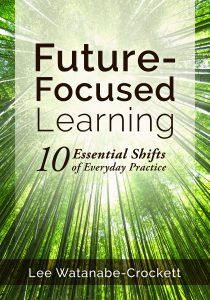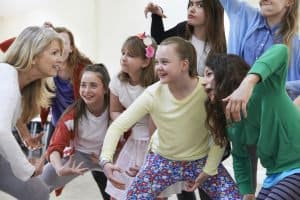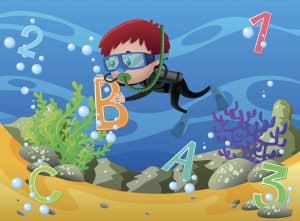
 Kathy Stein-Smith salutes the resurgence of French in the U.S.
Kathy Stein-Smith salutes the resurgence of French in the U.S.
The enduring relationship between the Americans and the French—“Every man has two countries, his own and France.” (Sentiment attributed to Thomas Jefferson)
French Is in the Air
Already the second most widely studied language around the world and in the U.S., French language and francophone culture are part of our daily lives, even if we never leave the U.S. From TV series like Marseille, Call My Agent, and even Dirty Money’s “Maple Sugar Heist” to movies like Midnight in Paris, and to exhibits like Public Parks, Private Gardens—Paris to Provence and Visitors to Versailles: 1682–1789 at NYC’s Metropolitan Museum of Art, French film and fashion, as well as language and culture, are part of American life. More and more Americans are choosing to make French language and francophone culture part of their own intellectual and cultural identity.
From the co-existence of French and British colonies in North America to the recent visits of French president Macron to the U.S.—to speak at the UN and to launch the dual-language education fund in September 2017, and his state visit to the U.S. in April 2018—the French have been our earliest allies, and French language and francophone culture have had a significant impact on the U.S. and on Americans.
While the significance of French language and culture for Americans is nothing new, it is not always part of the public conversation. While we know that the Marquis de Lafayette was our friend and ally during the American Revolution, we may not always realize the long and close relationship that France and French ideas have had with our own history.
Among the founding fathers, Thomas Jefferson, Benjamin Franklin, and John Adams spoke French and visited France during the American Revolution to seek French support. Our Declaration of Independence was inspired by the values and ideas of the Enlightenment, and France was the earliest supporter and ally of our nation. Americans—enamored with French culture—flocked to Paris and were among the earliest visitors to the Louvre, and the connection between France and the U.S. has never ceased.
Famous artists and authors, including Josephine Baker, Gertrude Stein, F. Scott Fitzgerald, and Ernest Hemingway, made Paris their home and found creative inspiration there through the first half of the 20th century. Well-known writers, including Samuel Beckett and Julien Green, have opted to write in a second language, French, rather than in their mother tongue, English. Many of our favorite children’s stories are from France—think Cinderella, Sleeping Beauty, and more—and French movies and French-themed museum exhibits are always popular. As president of France, Charles De Gaulle was among the first heads of state to follow the casket of president John F. Kennedy at his state funeral.
This is an not simply a retelling of historical events, however, but a spotlight on just how important, and strong, the ties between America and France—and the American and French peoples—are today. The resurgence of French is not only about our shared history but is even more importantly about life today in cities large and small, all across the U.S., where heritage-language speakers live side by side with vibrant French and francophone communities. French companies employ over half a million Americans, France is one of the major trading partners of the U.S., and France is a major investor in the U.S. Famous Americans, including Bradley Cooper, Jodie Foster, Johnny Depp, and former secretary of state John Kerry, speak French. Famous French celebrities and public figures who speak English include—most notably—French president Emmanuel Macron.
Millions of Americans visit France each year. In 2016, 4.2 million Americans visited, the largest number of visitors from any country beyond France’s closest neighbors. French tourism to the U.S. has also been increasing, with the U.S. one of the most popular long trip choices for the French. In 2015, more than 1.75 million French visited the U.S. Nearly 160,000 French are choosing to make their homes in the U.S., and it is estimated that more than 100,000 Americans live in France. France is among the most popular study abroad destinations for U.S. students, with over 17,000 U.S. students in the country. There are nearly 9,000 French students in the U.S., and the numbers on both sides are on the increase.
Our countries and peoples are linked through a shared history—past and present.
The French Language in the U.S.
Nearly 12 million Americans claim French ancestry, and over 150,000 French live in the U.S.
French is spoken in the home by more than 2 million in the U.S., with French/French Creole the third-most widely spoken language in the nation, and “L’Etoile du Nord” is the motto of the state of Minnesota. French is the most widely spoken language after in English in four states—Maine, Vermont, New Hampshire, and Louisiana—reflecting our historical relationship with both France and Québec. In an additional seven states—Massachusetts, Delaware, Maryland, West Virginia, North Carolina, South Carolina, and Mississippi, with French Creole the most widely spoken language after English and Spanish in Florida—French is the most widely spoken language after English and Spanish, making French a major language in twelve of the 50 states, or nearly a quarter of the U.S. states.
French is the second-most widely studied language in the U.S. Among public school K–12 students, 1.3 million are enrolled in French, and 176,000 are enrolled in French at the college and university level.
In addition to traditional foreign language learning, there are also French immersion programs and French schools in the U.S. The immersion programs generally teach a U.S. curriculum and are intended to develop second-language skills, while the French schools are actually accredited by the French Ministry of Education and teach a French curriculum. There are approximately 450 immersion programs in the U.S., of which over 20% are French-language immersion. There are also several models of immersion, with 27 programs listed as both dual language and French.
The Alliance Française is another important part of French language learning and cultural exchange around the world. There are more than 100 Alliance Française centers in the U.S., with more than 24,000 students.
But—Why French?
The decision to embrace the French language and francophone culture is one made both with the head and with the heart—based on practical career and cultural considerations but also in response to the enduring appeal and attraction of the French language and francophone culture.
French language skills are an economic asset. French is the third-most useful language for international business. France and Canada are among the top trading partners of the U.S. Over 4,600 French companies operate in the U.S., providing over 650,000 jobs, and the over 1,000 U.S. firms operating in France provide approximately the same number of jobs. In terms of foreign direct investment, France and the U.S. are each among the top investors in the other’s economy.
While the decision to learn the French language and/or to learn about francophone culture is valid based on professional and career considerations, the importance of French in the U.S. extends far beyond. The very appeal of the French language and of French and francophone culture is yet another factor. French soft power ranks number one globally, with French influence and interest in all things French apparent around the world.
Both France and Canada are led today by charismatic, young, French-speaking leaders, Emmanuel Macron and Justin Trudeau, prominent on the world stage and in the American press and media. French president Macron has been especially proactive in promoting the attractivité, or appeal, of French language and culture globally and in the U.S., where, in September 2017, he launched the French dual-language education fund at the CUNY Graduate Center during his visit to New York to address the UN General Assembly. French has been predicted to become the most widely spoken language in the world by 2050. In 2017, switching to French, European Commission president Jean-Claude Juncker said that English is losing its influence in Europe, to the benefit of French.
In encouraging the development of French language skills and knowledge of the francophone world, we will be reconnecting not only with our own heritage but also with a vibrant and growing global culture. The importance of French in the globalized world extends far beyond simply its economic benefits. The French are noted for their logical and critical thinking, which complements the U.S. approach to problem solving. Knowledge of another language has also been linked to creativity. Most importantly, at a time when complex global issues call for global solutions, the ability to see things from different perspectives is invaluable.
Conclusions
As far as the global appeal of the French language and francophone culture, Albert Camus said it best—”Ma patrie, c’est la langue française.” The appeal, or attractivité, of French and francophone culture for the world is confirmed by the number of tourists who visit France, the world’s most popular tourist destination, each year and by the artists, writers, and thinkers who have drawn their inspiration from French ideas. People from around the world flock to France due to the majesty of its culture and the power of its ideas, but also due to the attractivité, appeal, and fun associated with all things French.
References available at https://www.languagemagazine.com/references-for-lalliance-francaise/
Kathy Stein-Smith, PhD, is associate university librarian and adjunct faculty in foreign languages and related areas at Fairleigh Dickinson University–Metropolitan Campus, Teaneck, New Jersey. She is chair of the AATF (American Association of Teachers of French) Commission on Advocacy. She is a member of the ATA (American Translators Association) Education and Pedagogy Committee, the CSCTFL (Central States Conference on the Teaching of Foreign Languages) Advisory Council, and the NECTFL (Northeast Conference on the Teaching of Foreign Languages) Advisory Council. She also serves as French language facilitator at MLOW (Many Languages, One World). She is the author of three books and several articles about the foreign language deficit, has given a TEDx talk, “The U.S. Foreign Language Deficit—What It Is, Why It Matters, and What We Can Do about It,” and maintains a blog, Language Matters.
 Richard Lederer is inspired by his hometown festival dedicated to cartoon characters
Richard Lederer is inspired by his hometown festival dedicated to cartoon characters



 Kathy Stein-Smith salutes the resurgence of French in the U.S.
Kathy Stein-Smith salutes the resurgence of French in the U.S.

 In Future-Focused Learning: Ten Essential Shifts of Everyday Practice, published by Solution Tree, author Lee Watanabe-Crockett details how educators can shift instruction to focus on student-centered learning competencies to support critical thinking and digital skills.
In Future-Focused Learning: Ten Essential Shifts of Everyday Practice, published by Solution Tree, author Lee Watanabe-Crockett details how educators can shift instruction to focus on student-centered learning competencies to support critical thinking and digital skills.
 The European Day of Languages (EDL) is an annual celebration day to encourage language learning across Europe. At the initiative of the Council of Europe, EDL has been celebrated every year, on 26 September, since the European Year of Languages in 2001.
The European Day of Languages (EDL) is an annual celebration day to encourage language learning across Europe. At the initiative of the Council of Europe, EDL has been celebrated every year, on 26 September, since the European Year of Languages in 2001. Juliet Falce-Robinson insists on individual style in a skills-based approach to language teaching
Juliet Falce-Robinson insists on individual style in a skills-based approach to language teaching Two reports have been submitted to the U.S. Department of Education which examine the extent to which states’ education plans are in step with guidance established by the Every Student Succeeds Act (ESSA) with regard to English learners (ELs). Advocacy groups UnidosUS and Achieve produced the briefs, entitled “How Have States Set Goals for English Leaners in ESSA Plans?” and “How Are States Including English Language Proficiency in ESSA Plans?,” to provide an analysis of the English Language Proficiency (ELP) indicators and academic achievement goals proposed in state ESSA plans. They examine whether states are taking meaningful steps to improve academic outcomes for EL students and provide recommendations to develop an accountability system that reflects that. “Since its passage, the national education law, ESSA, has significantly altered the accountability landscape to ensure the academic performance and progress of ELs is a priority, and not an afterthought. For the more than five million EL students in the K-12 school system, this has been a welcome shift – but our work is not over. We will continue to monitor statewide implementation of state’s EL goals and provide assistance where needed so that our most underserved students reach their full potential,” said Eric Rodriguez, VP of policy and advocacy at UnidosUS.
Two reports have been submitted to the U.S. Department of Education which examine the extent to which states’ education plans are in step with guidance established by the Every Student Succeeds Act (ESSA) with regard to English learners (ELs). Advocacy groups UnidosUS and Achieve produced the briefs, entitled “How Have States Set Goals for English Leaners in ESSA Plans?” and “How Are States Including English Language Proficiency in ESSA Plans?,” to provide an analysis of the English Language Proficiency (ELP) indicators and academic achievement goals proposed in state ESSA plans. They examine whether states are taking meaningful steps to improve academic outcomes for EL students and provide recommendations to develop an accountability system that reflects that. “Since its passage, the national education law, ESSA, has significantly altered the accountability landscape to ensure the academic performance and progress of ELs is a priority, and not an afterthought. For the more than five million EL students in the K-12 school system, this has been a welcome shift – but our work is not over. We will continue to monitor statewide implementation of state’s EL goals and provide assistance where needed so that our most underserved students reach their full potential,” said Eric Rodriguez, VP of policy and advocacy at UnidosUS.
 Lynn Hobratschk, Amy Jones, and Lisa Toole share their best practices for choosing curriculum, training educators, and maintaining focus
Lynn Hobratschk, Amy Jones, and Lisa Toole share their best practices for choosing curriculum, training educators, and maintaining focus
 Patricia Hanson shares practical tips for classroom success
Patricia Hanson shares practical tips for classroom success